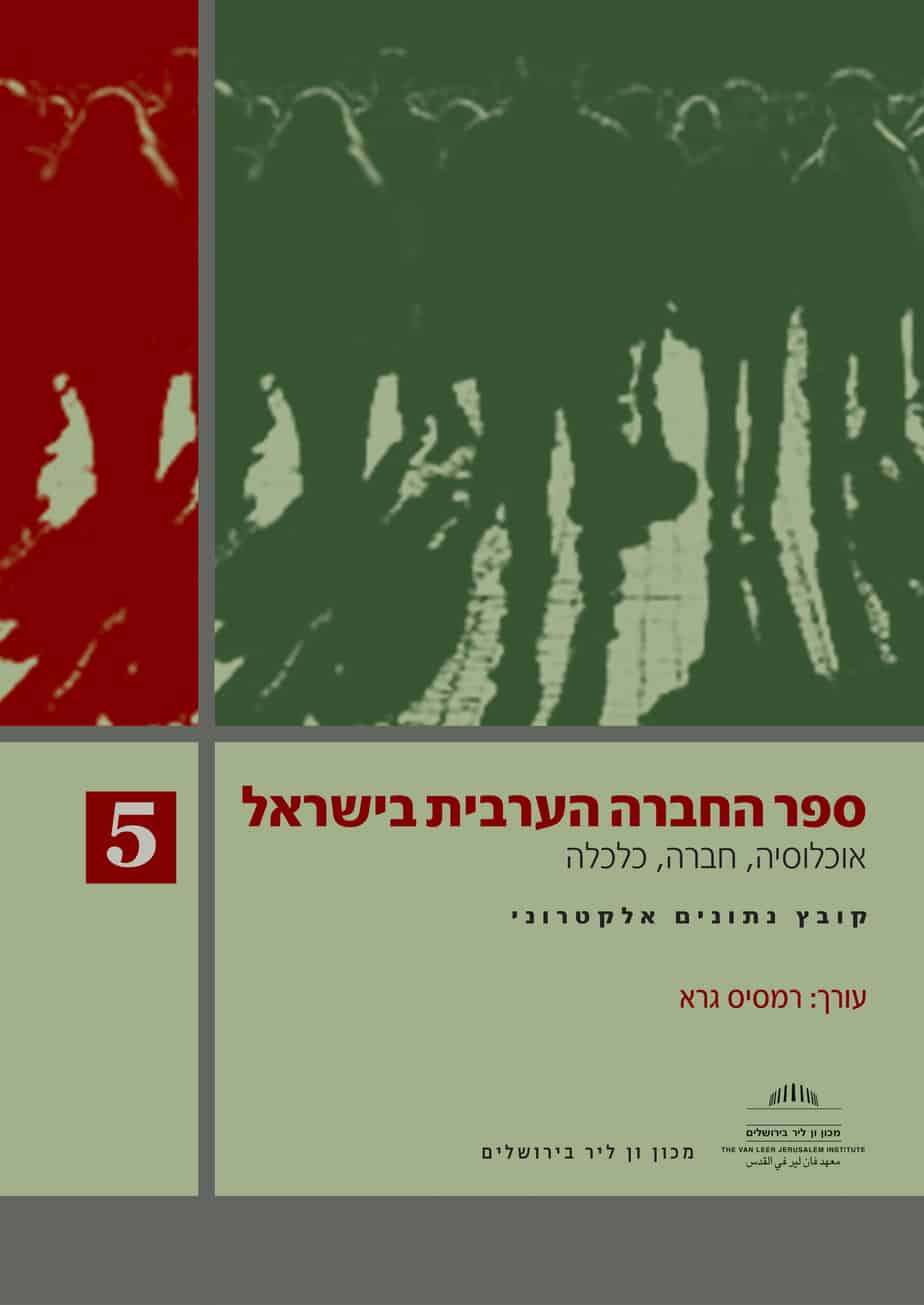Arab Society in Israel (5)
Population, Society, Economy (electronic book)
| Edited by | Ramsees Gharrah |
| Publisher | Van Leer Institute Press |
| Language | Hebrew |
| Year of Publication | 2012 |
| Series | Arab Society in Israel: A Statistical Yearbook |
With its fifth volume, Arab Society in Israel: Population, Society, Economy, the statistical project of the Van Leer Jerusalem Institute, conceived of as a way to document Arab society in Israel and the internal changes in it, has taken on a new look and joined the digital era. Henceforth the data files will be posted on the Van Leer website as well, where they can be accessed by everyone interested in a broad and ongoing perspective on Israeli Arab society. The data files, which constitute a research tool of unaparalleled value, are intended both for students of Israeli Arab society and for policymakers, the media, university students, and everyone who wants to become more familiar with Israeli Arab society. The current volume, like its four predecessors, combines statistics with general information about the Arab sector in Israel. The data collection and editorial work were done by Ramsees Gharrah, with the help of a statistical team. Their work sheds light on the situation of Arab society in the complex reality of Israel at the start of the second decade of the twenty-first century.
Each volume in the series is divided into five detailed sections: demography, employment, standard of living, education, and local government. In addition, other areas are covered from time to time: healthcare (vol. 2), ideas about selected aspects of life (vol. 4), and profiles of Arab localities (the current volume). Volume 5 makes an additional contribution by offering a trending perspective of summary tables for the data for 2001–2009 for selected indexes. Some of the trends are compared to those for the Jewish sector. Like the data of the Central Bureau of Statistics, this volume aspires to be accessible to the broadest possible readership. Consequently, in addition to the statistical tables, each chapter begins with a summary of selected findings and their visualization in graphs and diagrams.
The electronic volume is available in both Hebrew and English.




